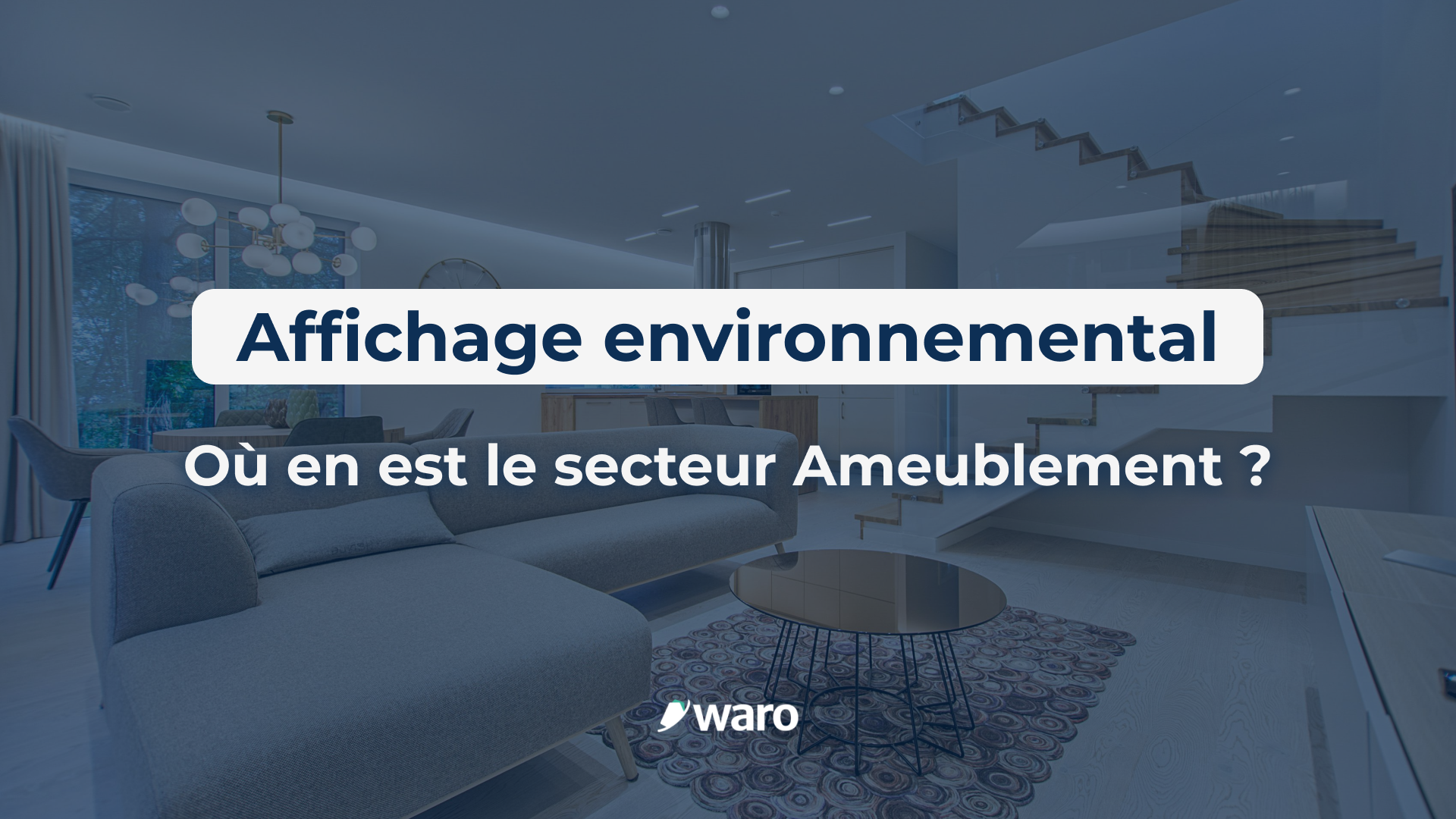
The furniture sector enters a decisive phase with the launch of the technical co-construction of the environmental display system.
This project is in line with the measures that will come into force on October 1 for the textile sector, and the work carried out in the food sector.
The aim is toprovide consumers with clear, reliable environmental information, while promoting the eco-design practices of the industry.
The textile sector has been a forerunner in environmental labelling. After several years of testing, consultation and methodological enrichment, the work is now complete and the system is ready**. The scheme officially came into force on October 1, 2025**.
As announced by the French Ministry of Ecological Transition, many brands (mass retailers, DNVBs, specialist retailers...) are already committed to implementing the scheme by the end of 2025. This dynamic is a concrete illustration of where the furniture sector is heading in the coming months.
📄 See the official press release: Sustainable fashion - Launch of environmental labelling on October 1
The methodological foundation is based onLife Cycle Assessment (LCA), structured around the European Product Environmental Footprint base and enriched to meet the specific needs of the furniture sector. The aim is to measure an "environmental cost" for each product, expressed in a simple and comparable way.
The work also takes up the BPX-FCBA-ADEME technical standards already well established in the sector (furniture, upholstered seating, bedding, etc.), some of which have been updated or created in 2023/2024.
The process of developing environmental labelling for the furniture sector is based on a participatory approach. It is not a method imposed unilaterally, but a technical co-construction exercise led by ADEME **in close collaboration with industry players (**industrialists, brands, FCBA and Ameublement Français ...).
This approach is structured around several technical workshops, organized throughout the methodological development phase. Each workshop addresses a specific methodological issue (such as sustainability or impacts on biodiversity), with the aim of :
One of the major challenges, for example, is to better characterize the durability of furniture, not only in terms of its physical robustness (strength, repairability), but also in terms of its behavior, by integrating elements such as aesthetic or functional obsolescence (fast furniture, rapid marketing renewal, etc.).
Another structuring aspect is the impact on biodiversity linked to forest management and wood traceability. These issues, which have long been outside the scope of conventional LCAs, are now the subject of specific methodological additions, in line with existing labels (FSC, PEFC) and industry practices.
The main challenge is to provide a simple, scalable and accessible assessment tool, even for large-scale retail catalogs. Thanks to default scenarios co-constructed with the industry, marketers will be able to model the environmental impact of thousands of products, based on a limited amount of data.
The methodology will be rolled out in several stages, with finer levels of assessment to be proposed at a later date for players with specific, verifiable data.
If we draw a parallel with the system deployed in the textile sector, here is a possible projection:
This modular system enables each company to commit gradually, according to the maturity of its product data, while guaranteeing usable and comparative results from level 1.
Default scenarios designed with the industry in mind
To enable rapid ramp-up, the method incorporates default scenarios co-constructed with furniture industry professionals. These scenarios cover :
In the textile sector, the combination of an open-source tool, an API that can be connected to product databases, and sector-specific default scenarios has enabled certain chains to :
The furnishings sector is following the same trajectory: the furnishings version of Ecobalyse is currently under development, with a dedicated interface expected in Q1 2026.
👉 Follow the progress of environmental display for the furniture sector on :

